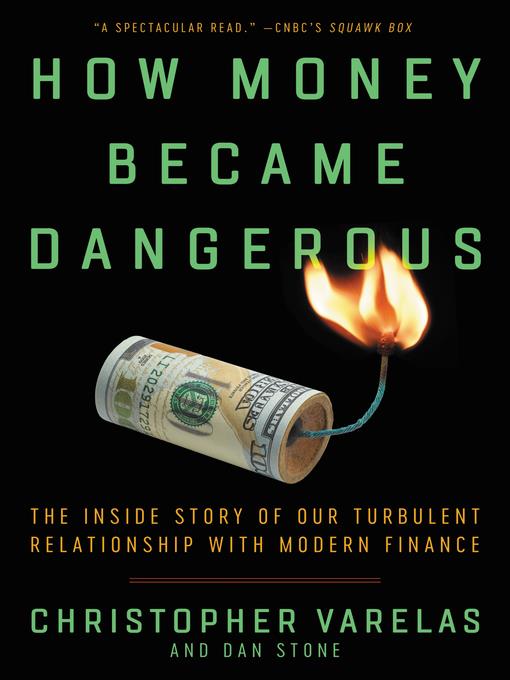
How Money Became Dangerous
The Inside Story of Our Turbulent Relationship with Modern Finance
کتاب های مرتبط
- اطلاعات
- نقد و بررسی
- دیدگاه کاربران
نقد و بررسی

September 30, 2019
Former Citigroup executive Varelas debuts with a discursive insider account of the financial industry and the fiscal perils facing America today. Varelas joined Bank of America in 1985 as a corporate loan officer servicing L.A.’s diamond and gold wholesalers. One of his clients would later be convicted of laundering money for Colombian cartel boss Pablo Escobar, a lesson that Varelas says helped to prepare him for the “rationalized immoral behavior” of Wall Street. Tracing his rise to head of Citigroup’s technology, media, and telecom investment banking division, Varelas chronicles such high-stakes deals as Northrop Aircraft’s 1994 acquisition of Grumman Aerospace, and laments the technological (computer-based analytics) and structural (private Wall Street partnerships going public) changes that he believes have made the finance industry more complex and less humane over the past 30 years. Colorful anecdotes, such as the time an executive delivered an entire presentation based on a fortune cookie or the private jet ride Varelas shared with social media influencer Logan Paul, brush up against somber reflections on the bankruptcies of Orange County and Stockton, Calif. The result is an entertaining memoir that doesn’t quite live up to its inflammatory title.

October 1, 2019
An insider's view of how an increasingly abstract financial system fails to align with human needs. Investment banker and fund manager--and, as is often mentioned, former Disneyland employee--Varelas begins with a poignant lesson. As an elementary school student, he was impressed by a classroom visit from a banker who revealed that saving a dime each week would yield the fortune of $3 by the end of the remaining school year. He worked through high school, amassing even more money in a savings account, only to discover that it had zeroed out when the bank introduced a service fee without telling him. Therein was the end of his "naive trust that the system cared, somehow, about my well-being." It doesn't. What it cares about is how the numbers look at the end of the year so that the person manipulating them qualifies for promotions, bonuses, and all the "perverse incentives" of consumer society. Gone are the days, writes the author, when a person like his first major client, a diamond vendor, could borrow money on a handshake--and gone are the days when character mattered as much as collateral and capacity (i.e., "a borrower's ability to handle debt and expenses"). Varelas charts the evolution--or, more, accurately, devolution--of the modern financial sector, noting that when banking firms went public there was no longer a personal stake in the game but instead only "employees looking to maximize annual compensation" without sufficient concern for risk, one of what Walt Disney called "the hard facts that have created America." Other negatives in the system, writes the author, are time-sensitive algorithms whose speed divorces prices from "reality" and a corporate culture that turns the financial-sector worker into "merely a cog in a global delivery mechanism." The author's exercise in forensic accounting as he examines a case of government bankruptcy is particularly fascinating. Alarming at moments and a welcome user's manual for anyone with investments, large or small, in the current market.
COPYRIGHT(2019) Kirkus Reviews, ALL RIGHTS RESERVED.

























دیدگاه کاربران